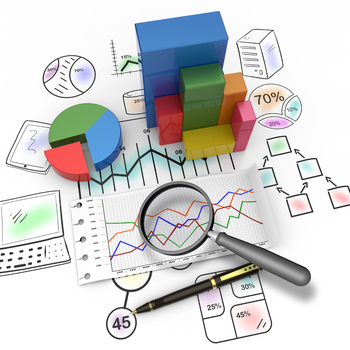IBM Outlines its Quantum Computing Roadmap
TL;DR
IBM presented its roadmap for quantum systems and plans to expand this promising technology as more competition in the market place emerges.

Key Facts
IBM team is developing a suite of scalable, increasingly larger and better processors, with a 1,121 qubit device, called IBM Quantum Condor, targeted for the end of 2023.
The company sees the 1,000 qubit mark as a breakpoint for overcoming the barriers that currently restrict the commercialization of quantum systems.
Today's commercial dilution refrigerators will no longer be able to cool and isolate those potentially massive, complex devices efficiently.
The roadmap includes the introduction of a 10-foot-tall and 6-foot-wide “super-fridge,” internally codenamed “Goldeneye,” a dilution refrigerator larger than any commercially available today according to IBM.
Details
Quantum computing has a relatively recent history since it was theorized in the 80s. It stands for the application of quantum theory, describing the interactions between elements at the scale of the infinitely small (i.e. how atoms and other smaller particles interact with each other), applied to the field of computer science. Therefore, quantum computing is the use of quantum-scale particles (atoms, electrons, and photons) to improve the performance of our computing hardware.
The application areas of quantum computing are as varied as cryptography, metrology, optimization, cybersecurity, simulation, data analysis, artificial intelligence, drug development, financial modeling, better batteries, cleaner fertilization, traffic optimization, weather forecasting and solar capture
To bring quantum computing to a wider audience, Cloud computing is indeed how most quantum resources will be consumed. Using the same approach, IBM's roadmap is part of a larger mission to design a complete quantum computer deployed via the cloud that anyone in the world can operate.
Knowing the way forward doesn’t remove the obstacles; we face some of the biggest challenges in the history of technological progress. But, with our clear vision, a fault-tolerant quantum computer now feels like an achievable goal within the coming decade.Jay GambettaIBM Fellow and Vice President, IBM Quantum
Get similar news in your inbox weekly, for free
Share this news:
Latest stories
How ManageEngine Applications Manager Can Help Overcome Challenges In Kubernetes Monitoring
We tested ManageEngine Applications Manager to monitor different Kubernetes clusters. This post shares our review …
AIOps with Site24x7: Maximizing Efficiency at an Affordable Cost
In this post we'll dive deep into integrating AIOps in your business suing Site24x7 to …
A Review of Zoho ManageEngine
Zoho Corp., formerly known as AdventNet Inc., has established itself as a major player in …
Should I learn Java in 2023? A Practical Guide
Java is one of the most widely used programming languages in the world. It has …
The fastest way to ramp up on DevOps
You probably have been thinking of moving to DevOps or learning DevOps as a beginner. …
Why You Need a Blockchain Node Provider
In this article, we briefly cover the concept of blockchain nodes provider and explain why …
Top 5 Virtual desktop Provides in 2022
Here are the top 5 virtual desktop providers who offer a range of benefits such …
Why Your Business Should Connect Directly To Your Cloud
Today, companies make the most use of cloud technology regardless of their size and sector. …
7 Must-Watch DevSecOps Videos
Security is a crucial part of application development and DevSecOps makes it easy and continuous.The …








